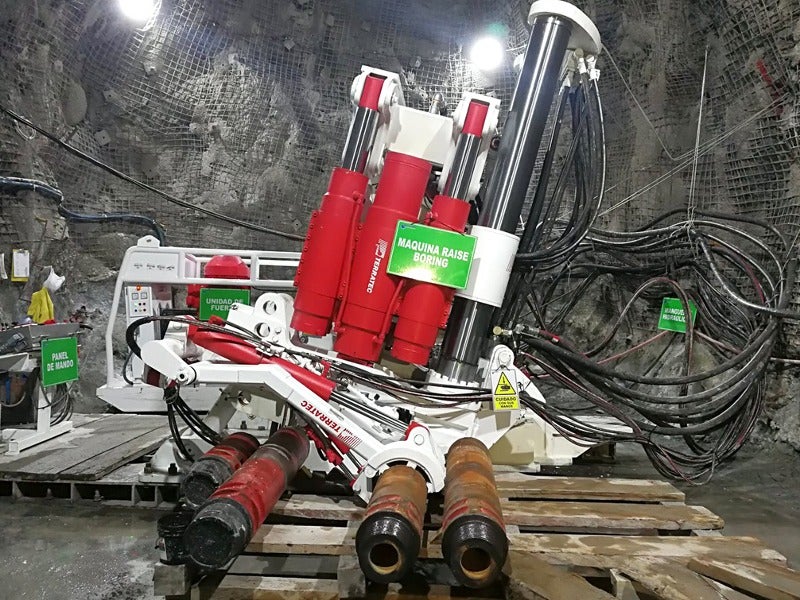The Buritica gold project is a high-grade gold project being developed near Buriticá in Antioquia, Colombia.
Continental Gold acquired the project in 2007 and fully owns it through its subsidiaries Continental Gold Limited Sucursal Colombia, CGL Gran Buritica, and Costa S.O.M. The mine is estimated to have a life of 14 years.
Feasibility study of the underground project, which is estimated to cost between $475m and $515m to develop, was completed in February 2016. The project is expected to produce first gold in the first half of 2020 and achieve ramp-up to commercial production within six months.
Buritica gold project location, geology, and mineralization
The Buritica gold project is located in the mountain terrains of Middle Cauca belt, in north-western Colombia. Spread over 75,583ha area, the project hosts 80 tenements including two main vein systems namely the Yaraguá and Veta Sur. Other mineralized systems identified at Buriticá include Laurel, San Agustin, Electra, Adonis, Orión, and Poseidón-Medusa.
The project hosts cretaceous basalt to andesite rocks of volcanic and volcanoclastic units interbedded with sedimentary rocks and is intruded by Diorite to Gabbroic bodies.
The Buriticá Intrusive Complex (BIC) is made up of andesite, diorites, and monzodiorite porphyries. Gold mineralization at Buriticá is mostly porphyry-related and features gold-quartz-carbonate base metal (CBM) style vein/breccia system.
Buritica gold project reserves
The Buritica gold project is estimated to hold 13.72 million tonnes (Mt) of proven and probable reserves grading 8.4 grams per ton (g/t) Au and 24.3g/t Ag. Contained gold and silver are respectively estimated to be 3.71 million ounces (Moz) and 10.72Moz.
Mining and ore processing at Buritica gold project
Long-hole open stoping mining method will be employed to extract high-grade ore from the underground deposit. Cut-and-fill method and shrinkage stoping methods will be applied to extract lower quality ore.
The underground ore body will be accessed via three ramps namely South ramp, Yaraguá ramp, and the Higabra valley tunnel. The mining rate will initially be 2,100 tons per day (tpd) and ramped to 3,000tpd by the third year.
With an operating capacity of 3,000tpd, the processing plant is expected to have overall recovery rates of 95% and 59% for gold and silver respectively.
Run-of-mine (ROM) ore will be initially crushed in a primary jaw crusher before being conveyed to the grinding circuit comprising a semi-autogenous (SAG) mill and a ball mill. Mill discharge will be treated in a gravity circuit and the resulting product will be forwarded to magnetic separator and a concentrating table.
The resulting gold concentrate will be upgraded and refined before undergoing cyanide leaching and liquid/solid separation in a four-stage counter-current decantation (CCD) circuit. Gold will be recovered from the pregnant leach solution in a Merrill Crowe plant, followed by melting the zinc precipitate and gravity concentrate to produce a gold-silver dore bar.
Financing of Buritica gold project
Continental secured $175m financing in March 2019, which includes $75m from the issue of unsecured convertible debentures and $100m gold and silver stream.
Triple Flag Mining Finance Bermuda provided the gold and silver stream, which will be entirely used for the project development.
Buritica gold project infrastructure
Access to the Buriticá gold project is through the highway network connecting Medellín to Buriticá.
Power supply for small-scale project operations is currently provided by the existing 13.2kV grid. A 32km-long, 110kV transmission line will supply power from Chorodó substation to the Buriticá project substation.
Water for the mining operations will be sourced from the Higabra tunnel and stored in overhead tanks.
Contractors involved
JDS Energy & Mining prepared the feasibility study (FS) of the Buriticá gold project, while M3 Engineering & Technology designed the process engineering and associated infrastructure facilities as part of the FS.
The consortium of Ingeniería y Construcción Sidgo Kopers and HL Infraestructura was awarded the contract for the installation and development of the Buriticá processing plant.
Continental Gold engaged Gisaico for conducting major earthworks of the gold project, while Empresas Públicas de Medellín is responsible for connecting the new 110kV transmission line to the Chorodó substation.
Tierra Group was involved in the design of dry stack tailings storage facility and other plans related to environmental permit, water management, and water balance.





